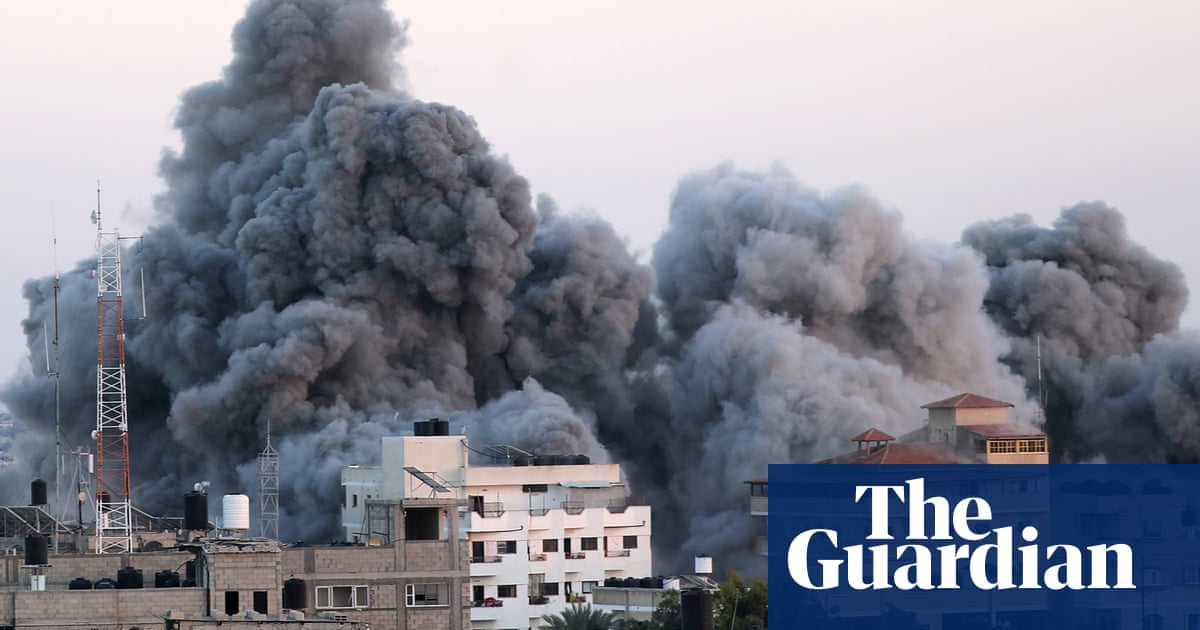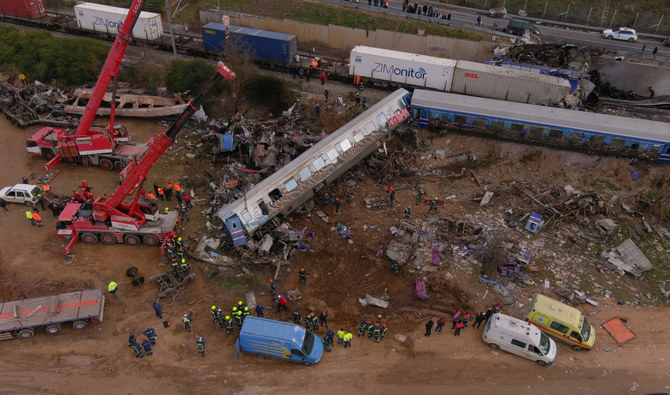
The death toll from the head-on collision of two trains in central Greece is likely to rise with officials acknowledging that scores of people have yet to be accounted for nearly 24 hours after it left 40 dead and many more injured.
Rescue services worked against the clock to find survivors as by late Wednesday it became ever more apparent the country was dealing with a train crash the likes of which had not been seen in Europe in decades. Many of the dead were students. By midmorning 35 bodies had been taken to the general hospital in Larissa, the nearest town, some burned beyond recognition, forcing relatives to give DNA samples.
“We find ourselves in front of an unimaginable tragedy,” Greece’s president, Katerina Sakellaropoulou, said in a statement. “We are mainly mourning young people.”
As condolences poured in from around the world, the questions mounted. Footage of rescuers rushing to the site of the crash near a gorge about 235 miles (380km) north of Athens in a desperate effort to find survivors amid the mangled wreckage sent a shudder through the nation. “We have to ask why?” said Sotiris Raftopoulos, the president of the Panhellenic association of retired railway workers. “How could this tragedy happen?”
The two trains – one carrying 342 passengers, the other transporting cargo from Thessaloniki to Larissa – collided at 11.20pm on Tuesday outside the town of Tempe after the Thessaloniki-bound night train, which had set out from Athens, inexplicably switched lanes and diverged to the freight track. The two trains then travelled for several kilometres along the same track before colliding at high speed. Witnesses who rushed to the scene described the front two carriages of the passenger train, where most of the student victims were seated, as being completely destroyed.
On impact the wagons exploded into flames, sending huge sheets of steel into the air. Survivors later spoke of being ejected from carriage windows; others described how they had to struggle through plumes of acrid smoke to free themselves after the train buckled. Many were subsequently caught on camera in the wreckage disoriented and dazed. “A lot of passengers didn’t understand what exactly had happened because they were asleep,” one survivor was quoted as telling the state news agency ANA-MPA. “I was sleeping, too, and the sudden breaking shook [me awake]. When we realised what had happened, we tried to get out of the wagons, and when we managed that, we saw the chaos.”
From early on, the spotlight fell not only on a detained stationmaster – blamed for the “human error” that caused the collision – but, increasingly, also the dire state of the nation’s railways.
Announcing his resignation after visiting the site of the crash, the Greek transport minister, Kostas Karamanlis, said the network was so flawed it did “not befit the 21st century”. “When something so tragic happens, it is impossible to continue and pretend like it didn’t happen,” the politician told reporters.
Stepping down was not only “a mark of respect toward the memory of the people who died so unfairly”, but, he added, an assumption of responsibility “for the Greek state’s and Greek political system’s mistakes over the course of history”.
The Greek prime minister, Kyriakos Mitsotakis, who also rushed to Tempe, called a three-day period of official mourning, ordering flags to fly at half mast. “There is one thing only that I can guarantee: we will learn the cause of the tragedy and we will do whatever passes through our hands for something like this to never happen again,” he told reporters.
In a late-night address, Mitsotakis vowed that “responsibilities will be assigned”. An independent cross-party committee of experts would, he pledged, immediately start looking into the causes of the crash.
“I met with relatives of the victims and the missing at the Larissa hospital. In their unspeakable pain, with great dignity, they asked me ‘why’,” he said. “It will also examine the longstanding delays in implementing railway projects.”
The Greek railway system was among an array of public utility companies that were privatised when the debt-stricken country narrowly avoided economic collapse a decade ago. With the network forced to work with a lack of staff, inadequate infrastructure and little automated signalling, officials in the transit sector warned a disaster was waiting to happen.
Trade unionists agreed. In February, barely three weeks before the crash, one union had issued a clarion call, saying: “Like all the previous government today’s has other priorities and it is not the safe transport of citizens.”
Nikos Tsikalakis, who heads the Association of Rail Workers and works as a pointsman, said the system was not only chronically understaffed but hopelessly behind the times. “The state has voted and has said, itself, that there should be 2,100 workers on the railroad when today there are 750 people who serve it all over Greece. It’s not possible that a stationmaster should [have to] talk to another stationmaster. Everything should be a little more automated.”
The arrested stationmaster, described as being in his late 50s with more than four decades of experience on the railways, was charged with involuntary manslaughter and unintentionally causing mass grievous bodily harm.
A police investigation was also launched into the cause of the crash. A public prosecutor, Stamatis Daskopolopoulos, tasked with overseeing the inquiry, said witnesses had begun giving testimony.
Nikos Zigouris, a rescuer, said there were areas around the train wreckage that emergency teams had not managed to get to and where other bodies were likely to be found. “It’s unclear if we’ll continue later or with the first light of day,” he told the public broadcaster ERT TV. “We need light because we need the cranes because [the debris] is so heavy.”









